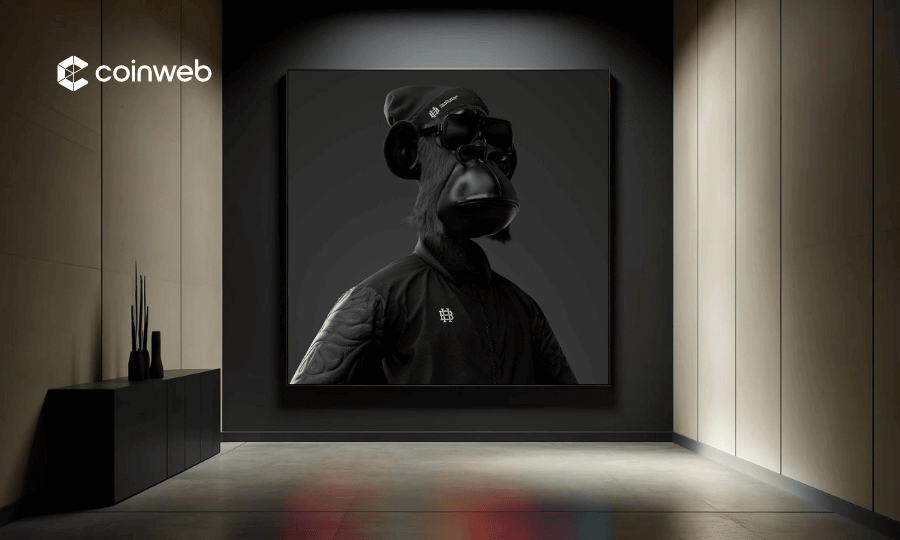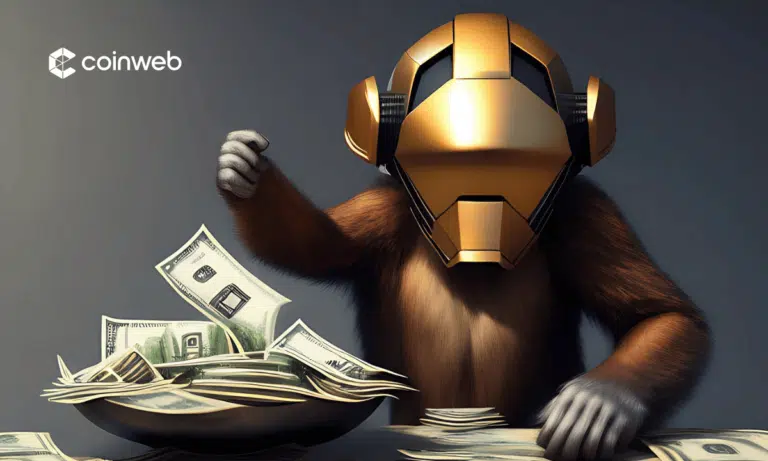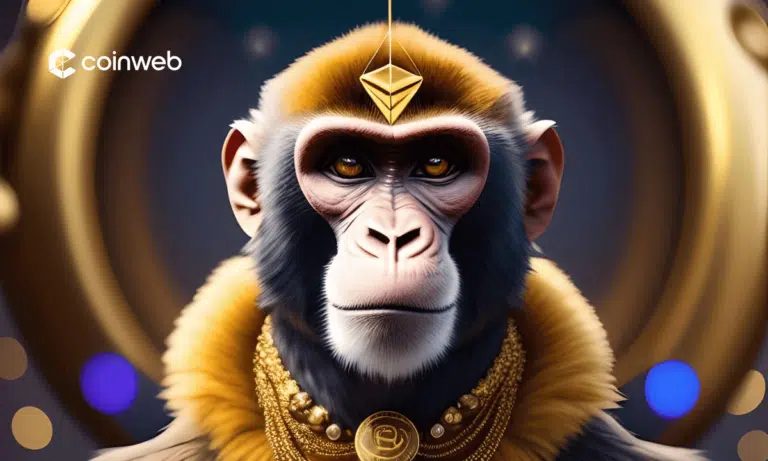Wondering how much is an NFT? Between creating, promoting, and selling, there are lots of costs that factor into the lifecycle of an NFT, so if you’re looking for insight into the financial commitment you can expect if you decide to start an NFT project, this article is for you.
Our team of experts (led by Sam Farao, a founder of Lightbulb Man, a successful NFT project that sold out within one day) has you covered!
How Much Is an NFT: Creation Costs, Explained

When starting an NFT project, you need to answer a fundamental question: How much does it cost to bring a digital asset to the blockchain?
The NFT creation process implies various costs, from the initial minting to the final sale. You need to evaluate all these fees to set up a cost-effective strategy to create and sell your NFTs.
Let’s analyze the fees and expenses to create an NFT.
Minting Fees
Minting means publishing your digital artwork as a unique token on the blockchain ledger. Before minting your first NFT, you must create a smart contract for your entire collection.
Creating the smart contract is usually more expensive than minting a single NFT, but you only need one contract for unlimited pieces.
The overall process costs depend on the blockchain and project complexity. On Ethereum, it can be as high as $1,000 due to high gas fees of around $500. Some blockchains offer low or no gas fee options.
Lazy minting allows you to list your NFT on a marketplace without minting on the blockchain first. The buyer pays the minting cost when purchasing.
Gas Fees
Not only minting but every operation that requires writing or modifying something on the blockchain needs gas.
Picture the blockchain as a busy highway, where gas fees are the tolls that vary with the traffic congestion.The gas price is dynamic and varies continuously so that it may be cheaper on weekdays or at specific times of the day.
Selecting transaction speed on blockchain also impacts gas fees: faster speed means higher cost.
Gas fees apply to every step: minting, transferring, listing, bidding, selling, and burning.
On Ethereum, an average minting gas fee hovers around $50, but it can climb up to as much as $300 during high-demand periods.
Marketplace Fees
Once your NFT is ready for the spotlight, you need to choose the right NFT marketplace, like Opensea or Rarible. These platforms usually take a 1% to 10% cut from each sale, and some also impose additional royalty fees for every sale.
You can choose the most prestigious and selective ones, where your NFT collection can be sold at higher prices. Alternatively, you can use other platforms where you can sell multiple copies of the same piece, each at a low price.
Comparing Blockchain Options for NFT Creation

Choosing the right blockchain is very important. It holds your NFT and impacts security and speed, influencing the overall costs.
The choice of a blockchain is also related to the perceived prestige associated with it.
Ethereum
The Ethereum blockchain has long been the main stage for NFT creators. Praised for its robustness and widespread adoption, it’s also known as the most expensive blockchain.
The high cost of minting NFTs on this blockchain depends on many factors:
- Gas price is based on supply and demand, and during peak transaction times, fees increase consistently.
- Keeping the expenses higher is also an anti-spam mechanism for the network.
- NFT minting is more resource-intensive than a normal transfer.
Some popular NFT projects using the Ethereum blockchain are Axie Infinity, NBA Top Shot, Decentraland, Bored Ape, Crypto Punks.
Solana
Solana, on the other hand, is a more efficient, high-speed, and cheap blockchain, with its unique combination of Proof of Stake and Proof of History algorithms. Its network is less congested, also because it has fewer transactions to process, compared to Ethereum.
NFT minting costs are reduced to a minimum, making this network ideal for NFT creators looking for scalability, especially in gaming, where quick transactions are crucial.
Top NFT projects on this blockchain are Frogana, New Howdy Hats, Peppermints.
Binance Smart Chain
Binance Smart Chain offers another interesting alternative for NFT makers. This blockchain reduces transaction fees to a fraction of those on Ethereum, making NFT creation accessible to a wider audience.
With average minting fees currently around 0.005 BNB (less than $3 USD), the Binance marketplace is a competitive platform for those wanting to dive into the NFT world on a budget.
Some popular NFT projects on Binance smart chain include Mobox, MetaX, veThena, Legendary Panda King.
Polygon
Then there’s the Polygon blockchain, which revolutionizes the NFT minting process with its gasless minting. Here, there is no gas fee to mint NFTs.
Another important note: OpenSea supports the Polygon network, offering a cheaper alternative to Ethereum on this popular platform.
Factors Affecting NFT Pricing

Understanding the costs you need to afford to create an NFT is just one side of the coin; the other is knowing what makes NFT valuable in the eyes of collectors.
Here are some factors that contribute to the value of an NFT:
- Rarity and uniqueness
- Size
- Complexity
- Quality
- Resolution
- Format accessibility
Let’s examine these factors more closely.
Rarity and Uniqueness
Not all assets in a collection have the same value. Some may be rare due to unique features or characteristics that most others don’t have.
Rarity refers to a limited number of tokens available. For example, if there are only 100 tokens in a collection, each one is rarer compared to a collection with thousands.
You can create 1/1 (one-of-one) NFTs, meaning only a single token exists on the blockchain, making it truly unique.
Alternatively, you can mint 1000 copies of the same digital asset, making it less scarce and widely available at a lower price per unit.
The rarer an NFT, the more valuable it tends to be. Uniqueness and scarcity increase perceived value and pricing.
Size and Complexity
An NFT’s size and complexity can make it stand out in a crowded market.
Larger and more intricate designs often require greater resources and time investment, which translates into higher sell prices.
Quality and Resolution
The quality of imagery and resolution can make a difference.
High-definition and visually compelling artwork is more likely to stand out in a multitude of competing projects.
Format and Accessibility
The format of an NFT significantly affects its marketability. An easily accessible and displayable format widens the NFT’s reach.
Moreover, adding unlockable content or real-world value to an NFT can expand the digital experience beyond the virtual world.
Marketing and Selling Your NFT

Once you create and price your assets, the spotlight turns to marketing and selling.
You need a clear strategy and great storytelling to engage potential buyers and turn your project into a success story. Remember you have to compete with other creators, and competition will be tough!
Let’s dive into the art of selling your NFT.
Setting the Right Price
Setting the right price is a delicate balance between its intrinsic value and the market’s sentiment. You need to verify the rarity and uniqueness of your asset, the market demand, and your return on investment, to arrive at a competitive yet fair price.
Stay flexible and be prepared to adjust your prices according to collectors’ responses and evolving market trends.
Attracting Buyers
Attracting buyers in a crowded market requires a strong presence in the online niche you are targeting (web3 enthusiasts, digital art collectors, crypto investors).
Engage with your followers with effective storytelling, sharing sneak peeks and work-in-progress of your project. You need to demonstrate ownership of your work, and all these activities will contribute to this.
Use the power of social proof with endorsements from popular members of the community, incoming drops, announcements, and a professional website.
Notable NFT Sales and Success Stories

The market has witnessed some astounding sales, with figures reaching into the millions, showing the huge potential of this innovative space.
We saw a peak in late 2021, and early 2022, with Beeple’s record-breaking ‘Everydays’. The CryptoPunks, which were initially free NFTs, reached $900 million in sales volume in a single month.
While the market started pulling back in 2022, these success stories showcase the power of rarity, cultural significance, and technological innovation that NFTs still represent today.
FAQs
The cost of an NFT can vary widely, from one cent to millions of dollars, depending on the popularity, the market demand, and the intrinsic value of the specific asset on sale.
Minting NFTs usually comes with a fee, paid in gas, but there are also free options (gasless or lazy minting).
There are many ways to get free NFTs, like airdrops released to early supporters of a project and giveaways. The most popular NFT marketplaces often offer some NFT at zero cost, but fees may apply.
The value of NFTs has declined significantly, with over 95% of NFTs having zero market value. However, there is still a robust market driven by the 5% of NFTs that have retained their value.
It gives the option for the user to get free NFT minting, as the cost of gas is covered by the service or protocol. It’s a great way to allow everyone to enter the NFT market at zero cost.
It’s a technique that allows the NFT to be minted only when someone decides to buy it. The buyer pays the gas fee and only then the digital asset is written on the blockchain.







